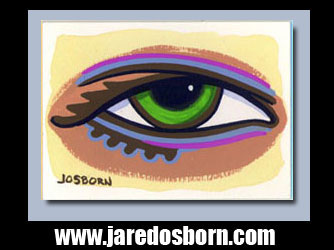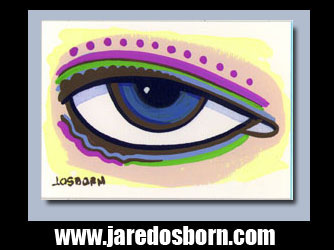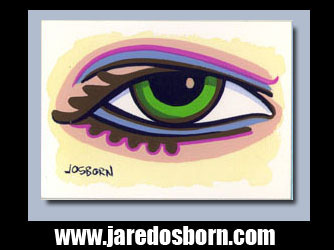It’s been a long winter because I’m all out of things to do. Or maybe I haven’t done enough things? That must be what I mean. It’s tough to get out and do things in winter because there is all that cold going on outside. Not to mention a lot of snow this particular winter. Sure I got outside and rode my bike but I’ve written plenty about that and I have nothing new to say right now about bike riding.
I’ve also written about all the new art supplies I’ve bought over this winter. I’ve chronicled the story of magic markers catching my attention and me buying some new markers little by little until I had a couple of big sets of them. Yeah, markers are fun. I told you all about my quest to develop a finished marker technique. I think I fulfilled that quest. But there was no pot of gold at the end of it. Just the satisfaction of making some nice drawings. A pot of gold sure would be nice for a change.
I think those are the only two things I’ve been doing all winter. Cycling and working. I’d tell you all about the graphics work I do for a living but it’s dull. I make products look pretty for people and that’s about all there is too it. Well, there is more to it than that but it’s all shop talk.
I am ready for a nice day so I can head down to Bryant Park in Manhattan. That’s a good “Get out of the house” excursion that I always enjoy. I haven’t finished more than a handful of the street photos that I took last year in NYC. By finished I mean turn them into something other than an untouched digital file. I expected to make more finished works from them after it got too cold out to take pictures outside but somehow I never did. I was probably too into the markers to mess with the photos. I made a couple of photos early on and a couple late but that was it. I’ll have to dig into them some other time.
I did start a Tumblr image blog this winter. That’s a new social networking/image site. A person can post his or her favorite pictures and share them with friends and strangers and easily re-blog other pictures that catch their eye. I’m not sure what the point of the whole thing is for me but I’m having a little fun with it. It did and does take some time to format things to be viewed. I just can’t stick things up willy-nilly. I don’t think many people I don’t know see my stuff up there because it’s hard to compete with all the people posting naked pictures. Naked continues to be popular.
I was cooking a lot in the crock pot all winter. I got tired of wondering what I was going to have for diner so I’d cook up enough to last me four or five days worth of diner. I don’t mind eating the same thing many nights in a row as long as it’s good. I made chili. One with chicken and one with beef. I also made a ground turkey casserole type thing. That and stew. Once again one with chicken and one with beef. I mention the meats but most of these dishes were 90% vegetables. I’d take two big onions, two pounds of potatoes, three Cuban peppers (cheaper that green peppers), a couple of heads of broccoli, garlic, oregano, basil, and throw it in the crock pot with the meat. Let it cook all day and it is done by diner.
I only had one computer disaster this winter. My whole system got taken down. I got it in my head to look at how to learn to program for the iPad so I got Apple’s Xcode 4 program and tried to install it. It crashed my system in the middle of the install and I had no choice but to force quit. It didn’t and I had to do a hard restart. Upon restart it booted up from my secondary hard drive. The system on my primary hard drive was totally gone. It was a goo thing that I had started using the backup program Time Machine a few weeks before. It took about fourteen hours to restore my hard drive but it did the job. Then, being a glutton for punishment I tried to install Xcode 4 a second time. The same thing happened. I guess I’m not learning Xcode 4.
I did manage to stave off having to buy a new drafting chair right away. I managed to “Fix” my broken one. I use the word “Fix” loosely. It’s been a horrible and crappy chair that has been breaking piece by piece since I bought it but it was the plastic ring that holds the pneumatic tube inside the metal cylinder that was the latest thing to break. Without that ring the chair would tip from side to side when it was at its full height. And I almost always sit at it at its full height it wasn’t safe. That is until I shoved some wooden shims between the two tubes. Now it doesn’t spin but it doesn’t teeter from side to side either. I can sit on it while I search for a new one. I don’t want to buy one sight unseen via the internet again so that will get me out of the house.
Do you know what is a good indication that I don’t get outside much in the winter anymore? I no longer have a good pair of boots. I haven’t had one in years. I have a crappy pair of boots that I wear outside in the winter but who want to be outside for long in a crappy pair of boots? I used to have at least one good pair of boots at any give time. Now it’s just shoes. I’m guessing the transition came when, in my late thirties, I finally owned a car. Before then I walked more places so a good pair of winter boots was a necessity in the winter. No I’m a car person like all the rest. You don’t need warm shoes and a warm coat if you have a warm car.
That and I’ve found it harder and harder to find a good pair of books that fit me. I have short and wide feet and boots have gotten narrower over my lifetime. Before I gave up the search I used to go to six to ten shoe store to try on boots in order to get a pair that fit. It was annoying and no fun. That probably coincided with my getting a car and I stopped ever shopping for boots. I’ve been buying the same brand of shoes for fifteen years now and that’s all I wear. They’re excellent shoes but not for going out in the winter for any period of time.
I’m guessing I’m like everyone else anyway. As kids we all used to love to go out and play in the snow. We barely even noticed it was cold. Then, in our youths, we go outside because who wants to sit around the house? There are places to go and people to see. But as we get older there seems to be less reason to leave the comforts of home during a hostile winter. Except for a bike ride of course.




